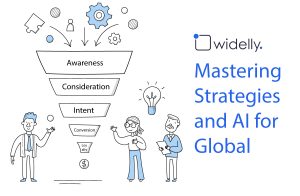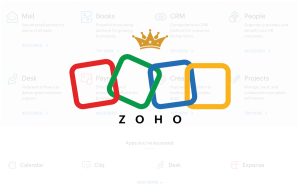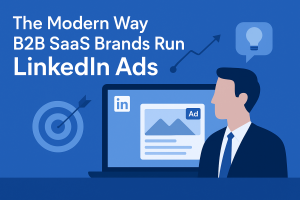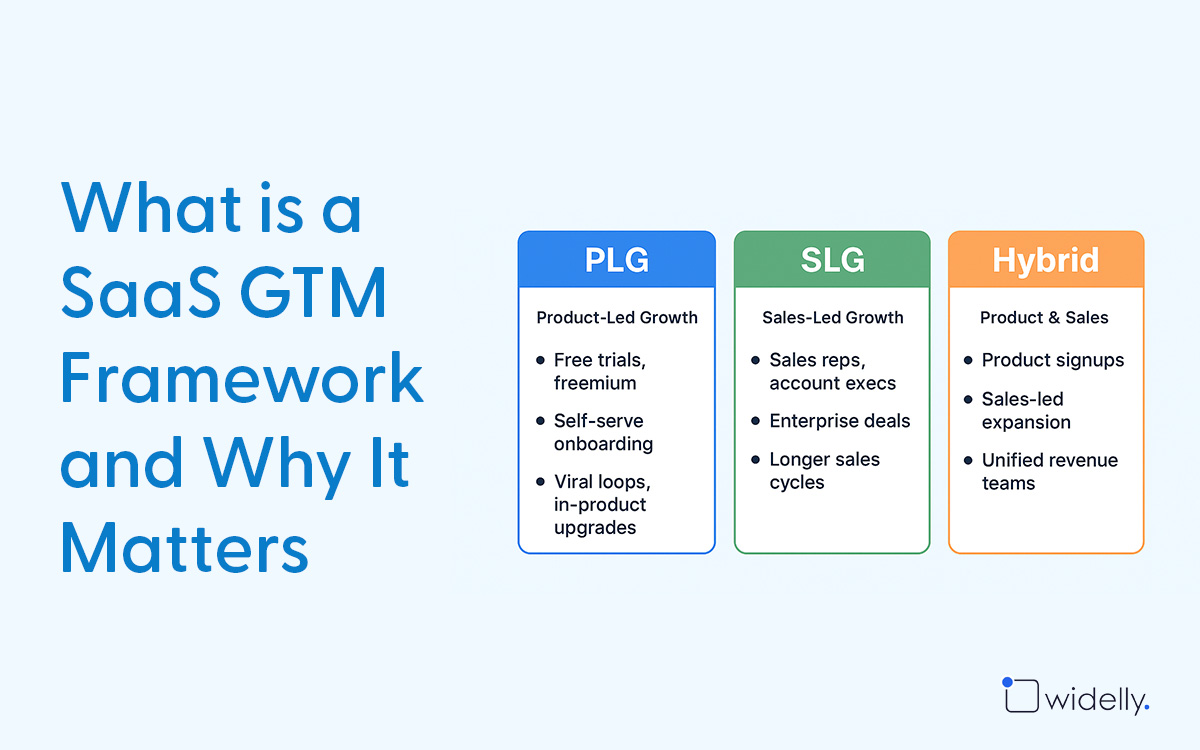In today’s rapidly evolving SaaS landscape, covering everything from small-business tools to enterprise platforms, sustainable growth depends on a clear and repeatable B2B SaaS GTM framework. Whether you’re targeting individual users, SMB teams, or large enterprises, the right go-to-market (GTM) strategy aligns your product, marketing, sales, onboarding, and performance metrics for consistent growth.
This guide describes what a B2B SaaS GTM framework is, lays out the major models (Product-Led, Sales-Led, Hybrid), presents global benchmarks, team design considerations, and provides a checklist to build your motion.
What is a SaaS GTM Framework?
In the SaaS world, a GTM framework defines how your product is taken to market: how you acquire and convert customers, how you onboard and retain them, and how you scale expansion and growth. It goes beyond marketing or sales alone, it ties together several elements:
-
Target audience and segmentation (who you serve)
-
Value proposition and positioning (why they buy)
-
Acquisition channels & motion (how they find you)
-
Conversion & onboarding experience (how they start paying)
-
Expansion/retention engine (how they grow or stay)
-
Metrics and economics (how you measure success)
-
Organisational structure (which teams make it happen)
In other words: your GTM framework turns “we have a product” into “we have a growing business”.
Setting up a GTM framework means moving from ad-hoc growth tactics to a systemised engine: predictable, efficient, aligned across functions, and adaptable to market segment (SMB → enterprise) and geography.
The 3 Core Models: PLG, SLG, and Hybrid (and beyond)
When global SaaS vendors look at how to go-to-market, three dominant models emerge. It’s important to understand each, their trade-offs, when they’re appropriate, and often how hybrid motions are taking over.
1. Product-Led Growth (PLG)
Definition: The product itself is the primary driver of acquisition, conversion and expansion. Users sign up, onboard, see value, upgrade, and expand with minimal or no human-sales intervention.
When it shines: Low-touch products, clear value, fast onboarding, viral or network effects.
Characteristics & benchmarks:
-
Freemium or free-trial model, self-service signup.
-
Low customer acquisition cost (CAC) relative to revenue potential.
-
Metrics: free-to-paid conversion (benchmarks ~3-5% or maybe higher).
-
Strong activation, product usage, stickiness. For example: time to first value ~ minutes rather than days; “feature adoption” and engagement metrics are key.
-
According to the 2022 OpenView SaaS Benchmarks, PLG-leaders achieve ~50%+ year-over-year growth, compared to ~21% for non-PLG peers.
Global relevance: Effective across geographies for smaller-ticket products, developer tools, collaboration apps, and SMB-facing SaaS worldwide.
2. Sales-Led Growth (SLG)
Definition: Traditional human-led sales motion: SDRs/BDRs generate leads, AEs close deals, often for large contract values, complex buying processes, multiple stakeholders.
When it fits: High ACV (annual contract value) deals, enterprise customers, long sales cycles, customised onboarding and implementation.
Characteristics & benchmarks:
-
Higher CAC, longer payback period, but higher revenue per deal.
-
Multiple touchpoints, longer consideration cycle, more relationship building.
-
For many enterprise-SaaS vendors across global markets, SLG remains core.
Global relevance: Especially in regulated industries, enterprise markets in North America, Europe, Asia-Pacific, and large multinational accounts.
3. Hybrid (PLG + SLG + other motions)
Increasingly, successful SaaS companies adopt a hybrid GTM model, combining product-led self-serve acquisition and human-led sales for higher tiers or complex use-cases.
Why hybrid now dominates:
-
According to a 2024 survey, 46% of SaaS companies called their primary acquisition method “Hybrid”, up from 56% in 2023 (bottom-up) and 33% “Top-down”.
-
Research shows the best approach is not “PLG vs SLG” but “PLG feeding SLG and vice versa”.
How to think about hybrid:
-
A free trial or freemium entry (self-serve) → upgrade to paid plan → as customers grow or need more support, hand-off to sales/CS for expansion.
-
Example: A small business signs up and self-serves; when usage grows and needs enterprise features, sales team intervenes to upsell and contract.
Global relevance: Works across all segments—SMB, mid-market, enterprise—and across geographies, enabling scalability and also capturing large deals.
Other Growth Motions Worth Noting
While PLG, SLG and Hybrid are the core models, additional growth motions or frameworks increasingly matter globally:
-
Marketing-Led Growth (MLG) heavy inbound, content, demand-gen.
-
Community-Led Growth (CLG) building communities, user referral loops.
-
Ecosystem/Channel led GTM leveraging partners, resellers, platform integrations for global reach.
These can be layered on top of the core PLG/SLG/hybrid definitions, especially when targeting global markets with diverse buyer behaviours.
Key Metrics for SaaS GTM Framework Success: Global Benchmarks
To evaluate and optimise your GTM motion, you must track core SaaS metrics and align them with your model. Here are the essential metrics and some global benchmark guidelines.
Key Metrics
-
CAC (Customer Acquisition Cost) & CAC Payback
-
CAC: the cost to acquire a customer (marketing + sales)
-
Payback: how long it takes to earn back the CAC from that customer’s revenue
-
Benchmark: For PLG strategies, payback often under 12 months; in high-efficiency cases under 6 months.
-
Example: If you spend $4,000 to acquire a customer and they generate $600/month, then payback ~ ~6.7 months if no churn and constant revenue.
-
-
LTV (Customer Lifetime Value) : CAC Ratio
-
Indicative healthy ratio is ~3:1 (LTV to CAC) or better for many SaaS businesses.
-
Higher ratios possible in enterprise models due to upsell and expansion.
-
-
NRR (Net Revenue Retention) / Net Dollar Retention
-
Measures revenue growth from existing customers after churn and expansion
-
Benchmark: Leading SaaS companies (especially PLG-led) achieve 120-140%+ NRR.
-
For SLG models, ~100-120% is good.
-
-
Free → Paid Conversion (for PLG models)
-
According to benchmarks: best-in-class ~3-5% conversion from free users to paying customers.
-
Time-to-value (TTFV) is often minutes/hours for high-performing PLG.
-
-
Usage/Activation Metrics
-
For PLG: Activation rate (20-40% free users).
-
Engagement/stickiness: e.g., DAU/MAU of 0.4-0.6, session frequency benchmarks.
-
For SLG: Pipeline coverage, win-rate %, deal velocity.
-
Global Market Insights & Trends
-
PLG adoption is increasing: In a 2024 survey, 54% of GTM executives said they have PLG capabilities (vs. 40% in 2023).
-
Lower-ticket SaaS (under ~$10k ARR) are especially well-suited to PLG/free-trial models.
-
As companies scale (>$20M+ ARR), acquisition channels often shift from purely PLG to more sales-led or hybrid motions.
Practical Example
Suppose your SaaS product sells at $500/month (=$6,000/year). If your CAC is $2,000 (marketing+sales), then CAC payback is ~4 months (if customer stays). If your average lifetime is 36 months (i.e., LTV ~ $18,000), then LTV:CAC = 9:1 — which is strong. But if churn is high (say lifetime only 12 months), LTV ~$6,000, ratio ~3:1 — this is acceptable but less ideal.
For enterprise product at $50,000/year with CAC $25,000 and average lifetime 5 years ($250,000 LTV), LTV:CAC = 10:1, payback ~6 months — excellent for high-touch SLG models.
Team Design & Organisational Structure for GTM Execution
The GTM framework is only as strong as the team executing it. Here’s how to think about organising the functions across models:
PLG Motion Team
-
Product: Owns onboarding, activation, usage, feature adoption. Focus on “first value” moment.
-
Growth/Marketing: Drives top-of-funnel sign-ups, virality, SEO, content, product-earned growth.
-
Customer Success/Retention: Focused on expansion (upsell), usage health, reducing churn.
-
Data/Analytics: Track funnel metrics, usage behaviour, activation, conversion curves.
Key leadership integration: Product and Growth teams fluidly collaborate; Sales may be minimal or in “assist” mode.
SLG Motion Team
-
Sales Development / BDRs: Qualify inbound/outbound leads.
-
Account Executives: Close deals, build relationships, manage multi-stakeholder processes.
-
Customer Success / Account Management: Onboard, ensure value delivery, renewals and expansion.
-
Marketing & RevOps: Demand generation, sales enablement, pricing and packaging design, deal analytics.
In SLG models, team functions are more distinct and each role is specialised.
Hybrid Motion Team
This requires orchestration:
-
A self-serve funnel (Product + Growth) captures high-volume/low-touch customers.
-
A “hand-off” mechanism triggers sales/field team when customers hit usage or spend thresholds.
-
RevOps/Operations acts as the “glue”: shares data across product, marketing, sales, success; automates triggers; fosters alignment.
-
Variable compensation and incentives need to be aligned to let both self-serve growth and high-touch sales succeed.
-
Global localisation: For international markets (APAC, EMEA, LATAM) you’ll often need region-specific marketing, local sales teams or channel/partner motion.
Global Considerations
-
Buyer behaviour varies: In some regions (e.g., Europe, Middle East) enterprise deals still favour in-person/field sales; in others (North America, APAC) self-serve and freemium accelerate adoption.
-
Pricing and currency: Though we’re using USD globally, local pricing must reflect purchasing power, regional competition, channel dynamics.
-
Partner/Channel TF: In geographies where direct sales is costly, leveraging partners/resellers is common.
-
Compliance and localisation: Data privacy, localisation of support, payment methods impact GTM fairness in global markets.
Case Studies & Global Examples
Here are how leading SaaS companies (across geographies) apply GTM frameworks.
Freshworks (Global, India-origin)
-
Originating in India, Freshworks expanded globally with a blended GTM: self-serve for small teams, and direct/partner sales for enterprise.
-
The hybrid model allowed them to scale across emerging markets and developed markets.
-
Key takeaway: structure your GTM motion to serve multiple buyer segments (SMB → enterprise) from a unified framework.
Hubilo (UAE / Global Event-SaaS)
-
Hubilo, based in UAE, serves global enterprise clients with a higher-touch sales model, but increasingly introduces self-serve/PLG elements for smaller event teams.
-
This combination lets them serve global geographies (including Middle East, North America, Europe) with flexible GTM depending on account size.
(Note: For real-world metrics specific to these companies, you’ll need access to their public filings or interviews – they illustrate GTM frameworks rather than disclose full private metrics.)
Checklist: Designing Your Own GTM Motion
Here’s a step‐by‐step checklist to design a GTM framework that works globally, across buyer segments.
-
Define your target segments & ICPs – Who are you selling to (SMB, mid-market, enterprise)? What is your total addressable market (TAM) globally?
-
Choose your GTM model(s) – Based on product complexity, ACV, buyer behaviour, decide whether PLG, SLG or Hybrid fits best.
-
Map user journey & funnel – For PLG: Website → Signup → Activation → Paid → Expansion; For SLG: Awareness → MQL → SQL → Demo → Close → Onboard.
-
Define pricing & packaging aligned with model – Self-serve tiers for PLG; custom quotes for SLG; consider global pricing/region adjustments.
-
Define key metrics – CAC payback target, LTV:CAC ratio, NRR, free-to-paid conversion (if applicable), time to value (TTV).
-
Build acquisition channels – SEO, content, freemium/free trial for PLG; outbound sales, ABM, partner channels for SLG/hybrid; localisation for global markets.
-
Design onboarding & activation to deliver value fast – Especially for PLG: time to “aha” moment should be minutes or hours.
-
Create expansion / retention engine – Upsell paths, usage-based pricing, cross-sell, renewals, community engagement.
-
Align teams & operations – Define roles, hand-offs, data infrastructure (CRM, product analytics), global enablement. Incentives aligned.
-
Localise globally – Adapt messaging, pricing, language, compliance, support for different regions. Consider partner/affiliate channels.
-
Build feedback loops & iterate – Track metrics continuously, use cohort analysis, adjust funnel, pricing, product-motion.
-
Scale & optimise – As you grow, refine threshold for hand-off between self-serve and sales, automate processes, invest in international expansion.
Further Reading:
Related Topics
About the Author
Widelly
widelly-admin · 8 articles published
Expert contributor at Widelly, sharing insights on B2B and B2C growth strategies.
Related Articles

The Marketing Funnel Updated for 2025: How AI and Authenticity Drive Real Growth
Introduction: Why the Marketing Funnel Still Matters in 2025 In 2025, the marketing funnel continues…

Zoho: The Affordable SaaS Powerhouse Challenging Google, Microsoft, and More
Zoho is a popular software company from India that helps businesses run smoothly. It offers…

How Top B2B SaaS Brands Run LinkedIn Ads That Actually Convert
Introduction: Why LinkedIn Ads Still Matter for B2B SaaS LinkedIn has become the go-to platform…

